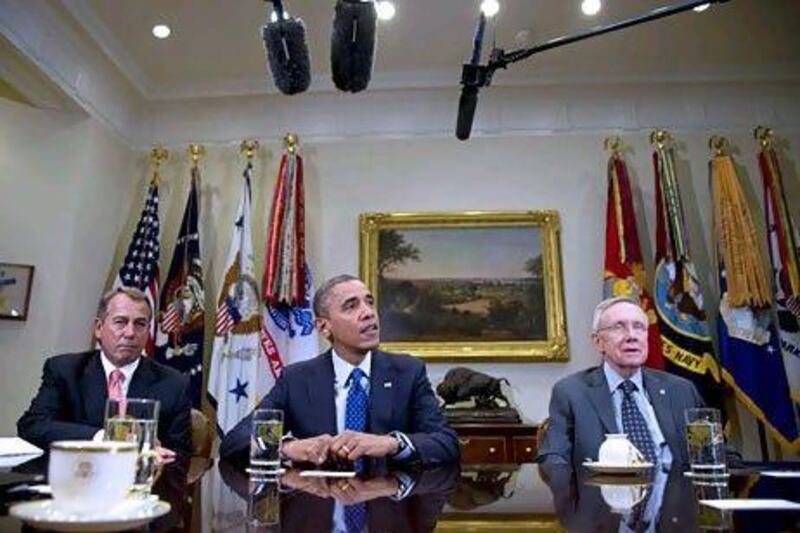Suppose I were to receive a coveted phone call from the White House asking: "From a leadership point of view, what should the president focus on as he begins his second term?"
My immediate advice would be to collaborate.
This is going to be essential to overcome the divisiveness and isolation that turned Washington into a parking lot during the past two years with neither party willing to work with the other.
By definition, collaboration is simple. It is jointly working with others, whether it is two individuals, two departments in a company, or in the case of Barack Obama, two political parties working together. But what makes collaboration difficult is that we typically speak of the need to collaborate only when there is some sort of division between the parties.
When parties get along fine, working together is part of the normal rhythm.
Even though collaboration is a leadership necessity, it brings a risk that leaders need to manage against. Collaboration can result in the "dumbing down" (least common denominator) effect coming from consensus that generally results in lose-lose.
Inexperienced leaders gravitate to trying to pacify the parties, but appeasement is not synonymous with collaboration. Collaboration should focus on collective success rather than the lowest common ground of agreement. To be collaborative, it requires a leader, or employee, to focus towards realising common goals.
It is disappointing that collaboration is most commonly needed internally, where the members really are all on the same bigger team.
For example, the Republicans and Democrats in Washington are all on the same team so they should be working for the greater good of America. Organisations face this same scenario with departments battling against one another, when in practice they should naturally be working together for the good of the company and move away from "turf" wars. More than just being collaborative, it is the leaders role to build collaboration in their organisation.
The role of the leader is to encourage participation and commitment to collective success. Great leaders build others into collaborators. And the need for this is as true here in our region and our companies as it is in the halls of congress for the president of the United States.
The greatest value of collaboration comes from the differing views when they focus on creating something even better rather than arguing why one view is superior to the other. Arguing for idea supremacy leads to lack of action.
As a leader in your organisation, you need to connect your employees to one another and build consensus and cohesion to achieve mutually beneficial goals.
The looming question is the one that Mr Obama is probably asking as well, "I tried to get them to work together, but they won't. So what am I to do?" In his first term, he accepted this as an excuse.
Great leaders face this reality daily and work to provide the collective context to bring collaboration.
Tommy Weir is an authority on fast-growth and emerging-market leadership, an adviser and the author of The CEO Shift. He is the founder of the Emerging Markets Leadership Center





